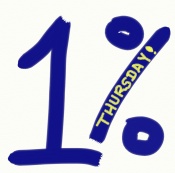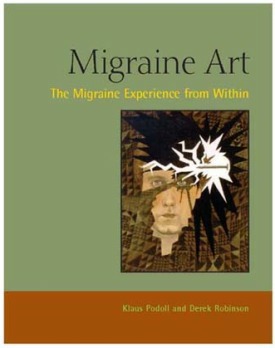HeadWay 75th Edition Giveaway – First 10 Finalists!
In January we celebrated the 75th issue of the free ezine, HeadWay. So last month we introduced the HeadWay 75th Edition Giveaway!
Subscribers were asked to share why they appreciate HeadWay, and how it’s been a help to them. Thanks for all your kind responses!
I’m supposed to choose the 20 best answers, and then choose a winner (using random.org).
Let me tell you, it was hard to choose the top 20! There were so many excellent responses – thank you to everyone who entered.
But in the end, I had to narrow it down. So here are the first 10 finalists – since this will be a long post I’ll post the next 10 later tonight. The winner will be announced tomorrow! The prize is a US$75 gift certificate to vitacost.com or drugstore.com.
HeadWay has been useful for me because when my headaches make me feel like I just can't go on, like I am the only one who feels like this and that I've lost hope, HeadWay gives me hope. I read the articles and feel like I am part of a group of people that understand me, how I feel, my frustrations and why I lose hope sometimes. I have had Migraines since early adulthood as well as chronic tension headaches. My tension headaches are daily. They easily escalate to a migraine and frequently do. I am on a daily preventative for migraines, muscle relaxers, etc., and I have just started biofeedback, because I still have hope. Maybe I'll read something, or hear about someone who did something that helped them, or maybe I can share something that worked for me. Regardless, now I know, thanks to HeadWay I am not alone in this.
~ Barb (Elizabeth, USA)
The information is priceless. I apply anything I can to my struggle with headaches. I can relate to so much of what is shared that even if I don't come away with some practical application for each issue, it is reassuring just to know that I am not alone and that what I am experiencing is real and not something I am blowing out of proportion like some people can make you feel. So many times I feel that an article is speaking directly to me.
~Sharon (Riverton, USA)
There was an article in HeadWay concerning "weekend headaches" caused by sleeping late on weekends vs weekdays. I now awake at the same time every day, and this has helped prevent my weekend headache. Thanks HeadWay
~Larry (Hatboro, USA)
Most importantly, it reminds me that I'm not alone in this. While family and friends may be supportive, they've never had a migraine. HeadWay shows me that others are out there, feeling just like I do. I also like that a lot of the "homework" has already been done in the articles, and that it's accurate. That way I can keep current on what's out there and how I can make the best decisions for me with my physician's help.
~Ali (Minneapolis, USA)
For many years I didn't even know that I suffered from migraines. I went down the whole allergy route, downing allergy pills and nasal surgery and was told it wasn't migraines. Well, maybe not classic migraine but thanks to HeadWay I now know there are many types and ways to cope and other migrainers out there talking about me! I'm 54 and still trying to unravel my migraine solution but thanks to HeadWay I have support. Thank you.
~Bonnie (Pittsburgh, USA)
HeadWay has been a huge encouragement as I walk the migraine pathway. I've been a migraineur for 15 years (that I realized it) now. At some point, you start to think "you've heard it all!" But HeadWay keeps the fresh and the relevant before me – and always in an entertaining format. This year my 23-year-old daughter was finally diagnosed with migraines, too (something I'd hoped she'd escape, but so be it). After basic conversation on the shared world, the first resource I sent her to was HeadWay!!!! I knew it would be a wonderful place for her to start – and stay! Thank you so much for helping my family live triumphantly.
~Kay (Mobile, USA)
HeadWay has been a wonderful tool in helping my son on his journey through the land of migraines. Finding answers and camaraderie for a teen migraneur has made us feel a little less alone. It has also educated me on my own increasing migraines, allowing me took ask more questions of the both our doctors. Thank you HeadWay!
~Sandy (Orchard Park, USA)
Headway is a lifeline in the dark times and a source of inspiration in the brighter ones. It’s well informed and well written articles are linked to all the source information in one click. A great resource!
~Kath (Shrewsbury, UK)
It's been able to help me pinpoint what affects my migraines so I can better manage them through various means. They've improved greatly over the last few months- and I'm so thankful for that!
~Kate (Lafayette, USA)
I love HeadWay! It has been very informative and made me more aware of how I can help myself and no longer be in denial of my migraines which makes me better manage my pain and my disease which seems to have lead to fewer migraines and less intense pain overall. I really look forward to each issue and the added links to see what I can learn. I sooo appreciate James for all the work he does to bring this to me and for making my life better because of it. Thank you!
~Kimberly (San Jose, USA)




